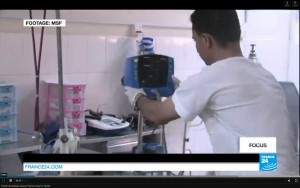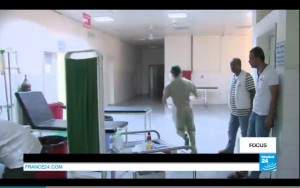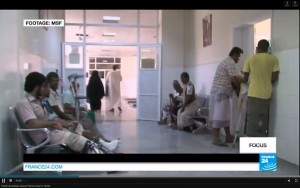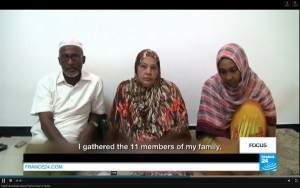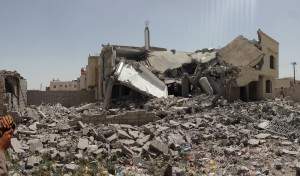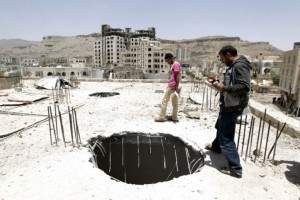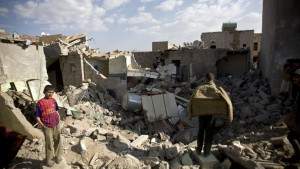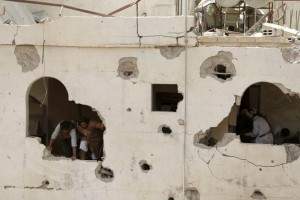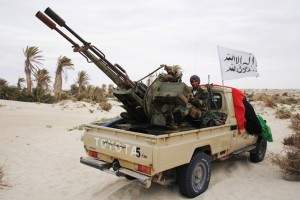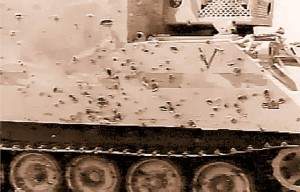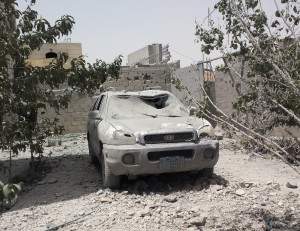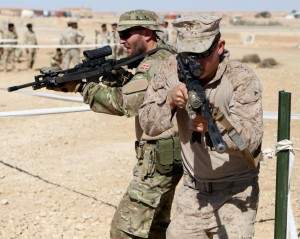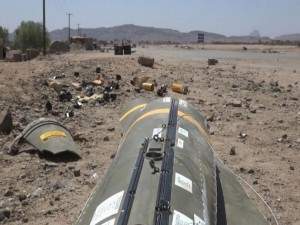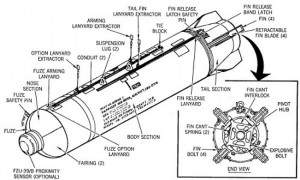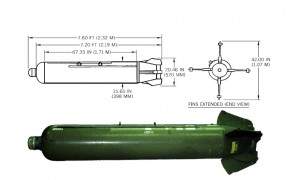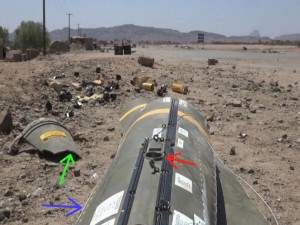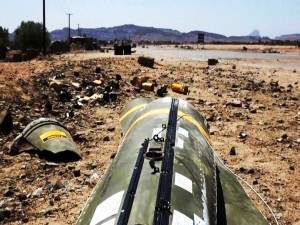Munitions don’t lie
August 27, 2023 by Thomas Wictor
I’m a big fan of the truth. Too much of my life has been spent in the thrall of shameless liars. It’s fun to expose them. For some reason the worst liars on earth these days are “human rights” and aid organizations. It’s clear that they’ll say whatever the biggest donors ask them to say, but there’s a darker side to it: They want suffering to continue, because as the world improves, there’s less of a need for “human rights” groups. Still, my ace in the hole against them is that munitions don’t lie.
So let’s completely expose the falsehoods being spread about the Saudi-led intervention in Yemen. The coalition of Saudi Arabia, the United Arab Emirates, Bahrain, Kuwait, Qatar, Egypt, Jordan, Morocco, and Senegal began Operation Decisive Storm in Yemen on March 26, 2015, after Iranian-backed Houthi rebels ousted Yemeni president Abd Rabbuh Mansur Hadi.
“Human rights” and “aid” groups say that Yemen is on the verge of a humanitarian disaster, since almost no food or water has gotten into the country due to the Saudi naval blockade, and all the medical facilities have been bombed. Yet nobody EVER provides evidence of these claims.
We see modern, clean, EMPTY hospitals.
And every Yemeni is clean, well fed, and materially well off.
Here’s a typical report from July 25, 2015.
Saudi-led airstrikes kill 120 in deadliest civilian strike in Yemen; coalition announces pause
By AHMED AL-HAJ and MERRIT KENNEDY, Associated Press
SANAA, Yemen (AP) — Saudi-led coalition airstrikes hit a residential area in a quiet Red Sea town in Yemen, killing at least 120 people in the deadliest strike against civilians since the March offensive began, security and medical officials said…
The airstrikes late Friday hit workers’ housing for a power plant in Mokha, flattening some of the buildings to the ground, the officials said. A fire erupted in the area, charring many of the corpses, including children, women and elderly people.
Not one photo or video of this event exists. Not one. There’s no evidence whatsoever that it happened.
Here’s another terrible story.
Airstrike hits market north of Yemen’s Aden, over 45 killed
By AHMED AL-HAJ, Associated Press
PressSANAA, Yemen—Yemen security officials and eyewitnesses say a massive airstrike by the Saudi-led coalition targeting rebels has hit a marketplace north of Aden, killing over 45 civilians.
The officials, who spoke on condition of anonymity because they were not authorized to release the information otherwise, say more than 50 civilians were also wounded in the strike Monday in Fayoush, a suburb of the southern port city of Aden.
The officials say bodies were strewn about following the strike and that Saudi-led airstrikes continued across the country.
Again, not a single photo or video of this massacre has emerged.
Now, let’s look at the photos we’re told are the result of Coalition air strikes. Here’s a destroyed house in Sana’a, the capital of Yemen, which the Houthis took over on March 19, 2015.
The debris shows that the explosion was directed toward the empty street, away from the houses behind the target and toward us, the viewers. That is precision. The Coalition hit an arms cache after somehow locating it inside the house. My guess is that part of the Coalition includes Israeli unmanned aerial vehicles (UAVs) that have synthetic-aperture radar (SAR) for mapping the insides of the buildings. The UAV operators would have to be IDF.
This building was hit with two inert aerial munitions filled with concrete or wet sand.
There’s no fragmentation damage inside the structure, and it’s still standing. The Coalition chose inert bombs in order to spare civilian lives. The target was likely a communications center.
This house was destroyed by an inert aerial munition.
Every building on all sides is unharmed, and there’s no sign of fragmentation. Again, the Coalition took out a military installation without hurting civilians.
When the press shows rare images of actual damage caused by air strikes, we see that the Coalition is taking superhuman care to avoid collateral damage. So the press then resorts to lying. The caption for this image is “People look from a house damaged by a Saudi-led air strike in Yemen’s capital Sanaa.”
No. All those holes were caused by a ground-based direct-fire system, the cannon of an infantry fighting vehicle or one of the thousands of “technicals” that prowl the Middle East.
This is what damage from high-explosive aerial munitions looks like.
This car was allegedly destroyed by a Coalition airstrike in Sana’a.
No. It has no fragmentation damage. Also, not a single leaf was knocked off the trees by blast. The dust came from a precision strike on an arms depot somewhere nearby, but the car was hit with a ground-based direct-fire system that pumped a round through the windshield.
As in Gaza, “human rights” groups are getting completely inaccurate casualty figures.
In this regard, statistics vary as to the number of victims, due to the reliance of international monitoring organizations on Yemeni sources, which lack fact-finding accuracy, while the Houthis maintain secrecy as to the loss of human lives.
This is the only site that breaks down the number of deaths on a day-by-day basis. As of today, it says that 2800 Yemenis have been killed. Do you know how many air strikes the Coalition has carried out? By July 4, 2015, it was 8000. That works out to 82 per day. If we use that ratio, it would mean that the Coalition has launched over 15,000 air strikes. This is an extremely conservative estimate, given that the UAE broke out of Aden on August 3, and the Saudis sent in a ground force from the north on August 4.
The Houthis fired intercontinental ballistic missiles (ICBMs) at Saudi Arabia on June 6 and August 25. In both cases the Coalition retaliated with extensive air strikes. It’s likely that the Coalition has hit Yemen with at least 20,000 air strikes. On June 9 alone, 121 Coalition aircraft bombed Yemen.
And yet with over 20,000 air strikes, the death toll is 2800. That’s one-tenth of one percent of a person killed with each strike. It took ten air strikes to kill one person.
But!
Each multiroled fighter was armed with at least four bombs. That’s 80,000 aerial munitions. Now we’re down to less than three one-hundredths of 1 percent of a person, or .029 percent. They had to drop twenty-nine bombs for each person they killed. To give you an idea of how careful the Coalition is being in Yemen, compare the past five months with the actions of Combined Joint Task force Operation Inherent Resolve.
From February 5 to February 8, 2015, the Task Force carried out 946 air strikes in Syria and Iraq. Do you know how many terrorists they killed in those three days? About 7000.
The Coalition has launched at least 20,000 air strikes in Yemen, killing 2800 in 146 days.
Combined Joint Task Force Operation Inherent Resolve launched 946 air strikes in Syria and Iraq, killing 7000 in three days.
WELL, WHAT ABOUT CLUSTER MUNITIONS?
More lies from Human Rights Watch.
Credible evidence indicates that the Saudi-led coalition used banned cluster munitions supplied by the United States in airstrikes against Houthi forces in Yemen, Human Rights Watch said today.
Cluster munitions are not banned. Only two weapons are internationally prohibited: poison gas and bacteriological agents. The Convention on Cluster Munitions was adopted in 2008 by nations that no longer matter geopolitically. Neither the US nor Saudi Arabia are signatories or state parties. If other nations voluntarily give up cluster munitions, that’s wonderful. But it doesn’t mean that the weapons are banned.
How many times has the Coalition used cluster munitions in Yemen?
Local residents named 13 people, including 3 children, who were killed as well as 22 people who were wounded in the seven attacks.
So the accusation is that the Coalition used cluster munitions in seven attacks over five months, killing thirteen civilians.
Human Rights Watch found unexploded submunitions scattered about in fields normally used for agriculture and grazing.
No photos or video of these submunition-covered fields have been published.
Based on examination of remnants, Human Rights Watch identified the weapons used in all seven attacks as United States-made, ground-launched M26 cluster munition rockets.
In addition, photographs and information from local residents indicate that Saudi-led coalition aircraft dropped a third type of cluster munition, bombs containing BLU-97 submunitions, in at least two attacks in Saada governorate on May 23. As far as Human Rights Watch has been able to establish, these attacks did not result in any immediate casualties, although unexploded submunitions have the potential to wound and kill if handled by persons in the future.
Here’s the photo.
The yellow cans are the BLU-97/B submunitions. That olive-drab casing in the foreground is supposed to be the SUU-65/B Tactical Munitions Dispenser (TMD) of the CBU-87 Combined Effects Munition, but it’s not genuine. There’s no target anywhere in sight, and the SUU-65/B in the image has several anomalies. Here’s what the real one looks like.
In the Human Rights Watch photo, the SUU-65/B has no suspension lugs, meaning an aircraft could not have carried it. Also, there’s a fuse well (red arrow) not seen on the actual munition.
The “broken” edge of the casing (green arrow) is far too thick to be sheet metal, and it’s also olive drab, indicating that the fragment is made of a molded, homogeneous material. It’s obviously a thermoplastic such as ABS. Finally, the body has extensive riveting (blue arrow), another feature absent from the SUU-65/B. The “equalization” function of photo-enhancing software shows that the SUU-65/B is superimposed.
It’s a composite photo, which is why the perspective is so weird. The BLU-97/B submunitions are too large, and the SUU-65/B seems to be floating above the ground. Since Human Rights Watch can’t get its story straight about whether the Coalition used ground-launched or air-dropped cluster munitions, we can safely ignore the entire accusation.
Besides, cluster munitions aren’t banned weapons.
Even the people “being slaughtered” are debunking that claim.
Abdulbaset al-Qaidi, a Yemeni journalist based in Sanaa, says that “the coalition’s air force is targeting military sites in a very precise way, but the fact is that these sites are close to inhabited districts, and [it is] causing damage.”
Yes. It’s called “war.” Be grateful that you’re fighting the Saudi-led coalition and not Combined Joint Task Force Operation Inherent Resolve. Imagine what those 20,000 air strikes could’ve done if the Saudis actually wanted to commit war crimes.
This article viewed 821 times.

